
 |
Eager Space | Videos by Alpha | Videos by Date | All Video Text | Support | Community | About |
|---|

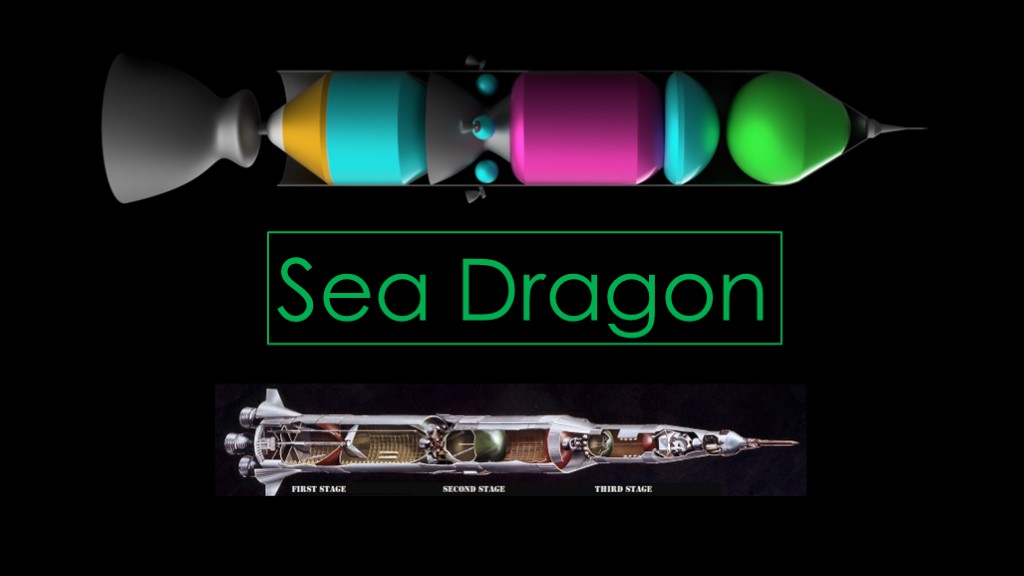

The creators of the TV Series For All Mankind had a problem...
Their story line required a large moon base that would grow larger over the years.

The Apollo lunar module could only carry a small amount of mass to the lunar surface - a ton or so. A modified "LM truck" would replace the ascent module with a cargo module, and that would carry perhaps 5 tons of cargo. That's enough for extended stays on the lunar surface, but too small to build and support a big base.
What was needed was a cheap rocket that could fly regularly.

Here's the solution to the problem - a rocket with enough oomph to support a lunar base - and other projects.

But interestingly, that rocket did not come from the minds of the shows writers...
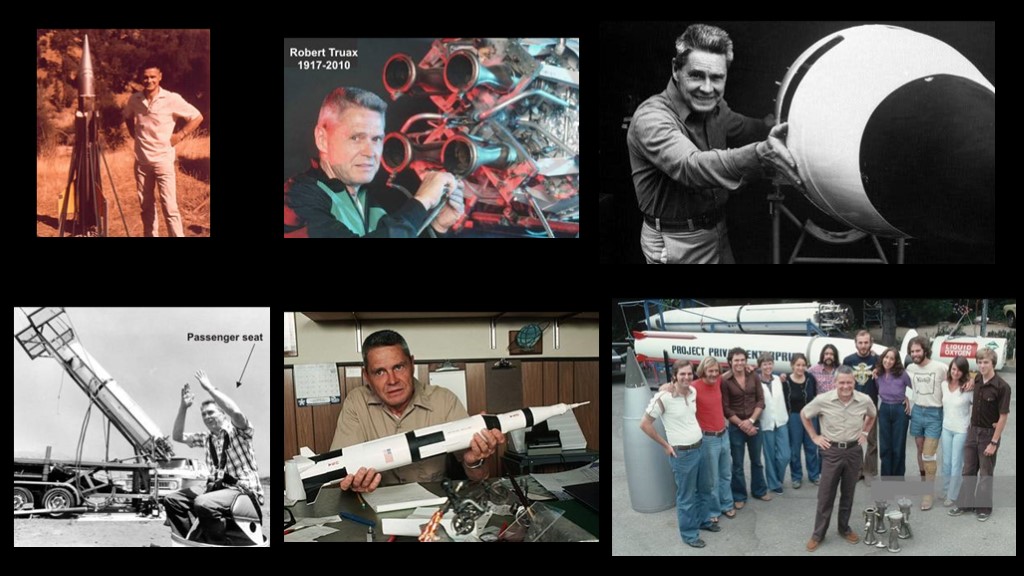
It came from the mind of rocket designer Robert Truax while working at the rocket engine manufacturer Aerojet in the early 1960s.
This is sea dragon.
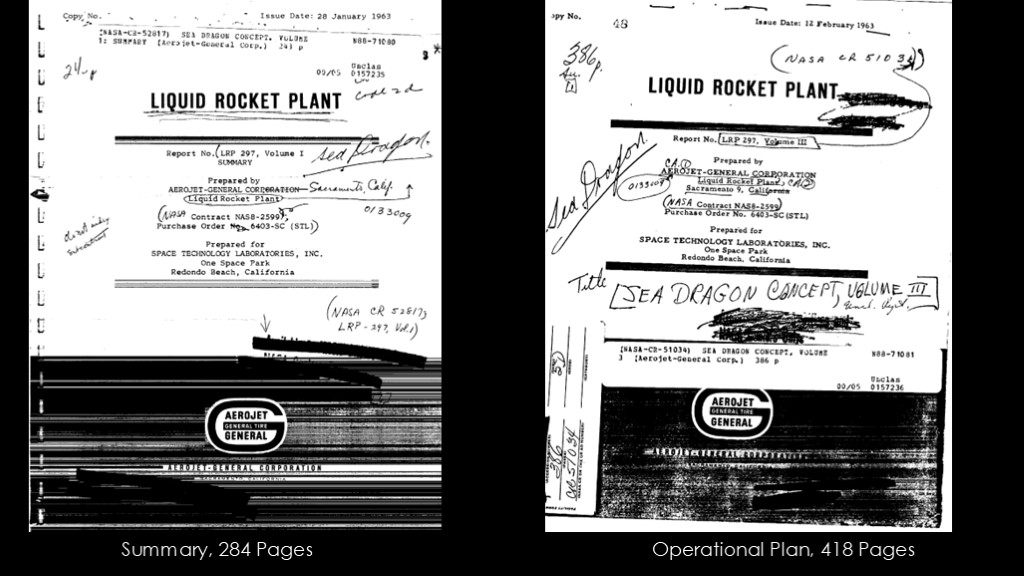
Sea Dragon was not just an idea, it was a very well defined proposal in three volumes, with the summary occupying 284 pages and the operational plan an additional 418 pages. Volume 2 is unfortunately not available online.
There is far, far more detail available in these documents than I can cover in a short video. I've linked to them in the video description.
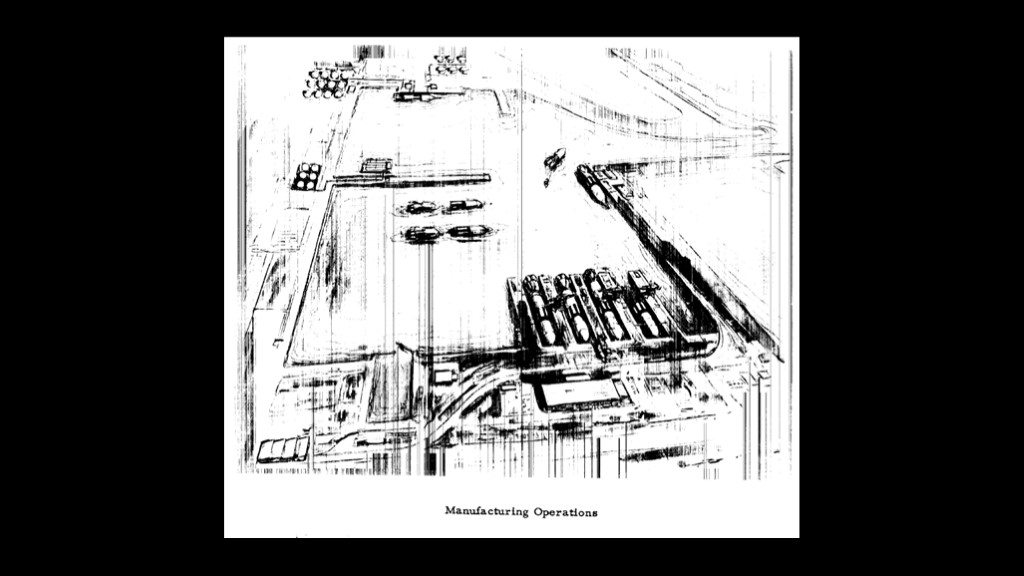
The Sea Dragon approach puts heavy emphasis on the "ship" part of the term "spaceship", with it being based more on shipbuilding approaches and technologies than what we think of as aerospace.
Here we see rockets being assembled in a dry-dock environment, and then towed out through a canal to be launched at sea.
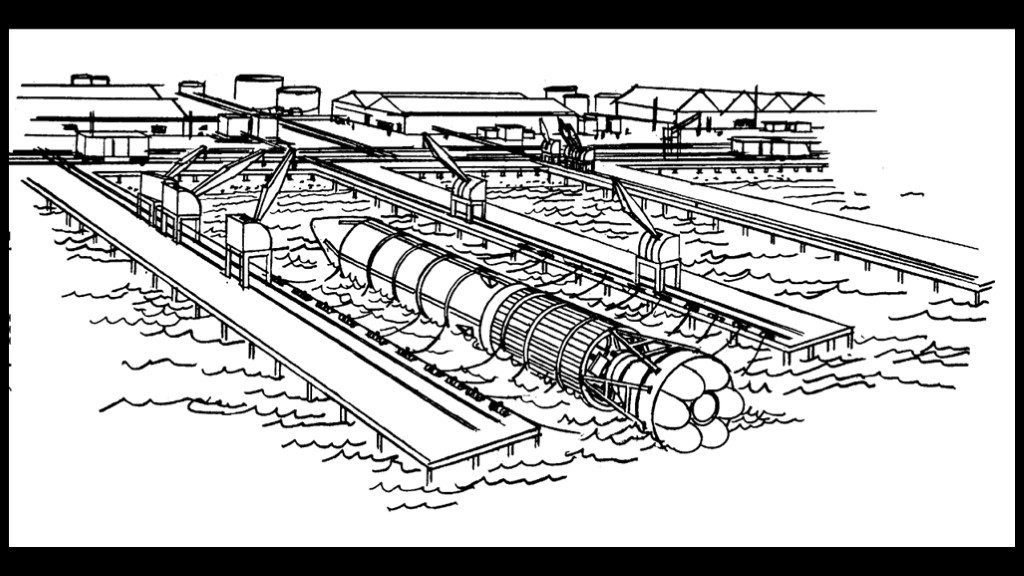
Here's another view of the rocket leaving the manufacturing area.
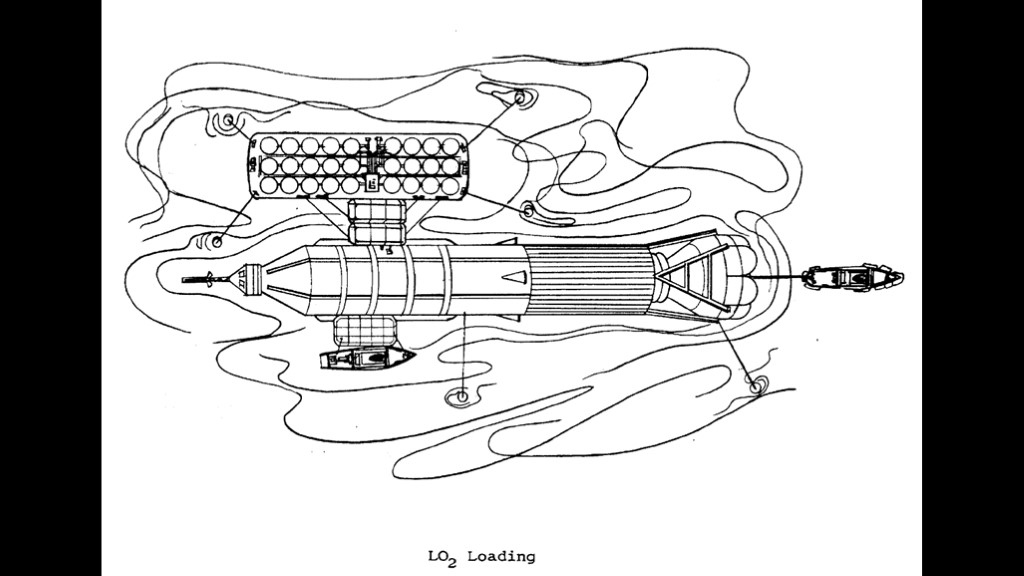
Once at the launch site, the rocket propellants would be loaded..
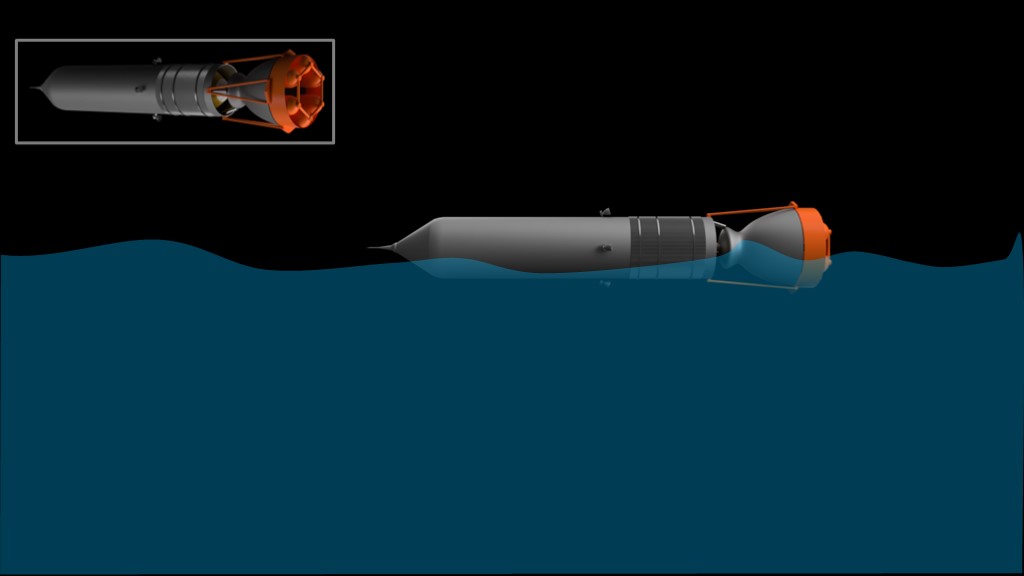
In preparation for launch the rocket needed to be flipped around so that it was vertical in the water. This was done using a set of 6 ballast tanks attached to the nozzle of the first stage engine.
The ballast tanks would be filled with a material such as drilling mud that is heavier than water. The weight will cause the rocket to switch to a vertical orientation.
The for all mankind team thought it would be cooler if the rocket started out fully submerged, but in fact it floated with most of the front section out of the water.
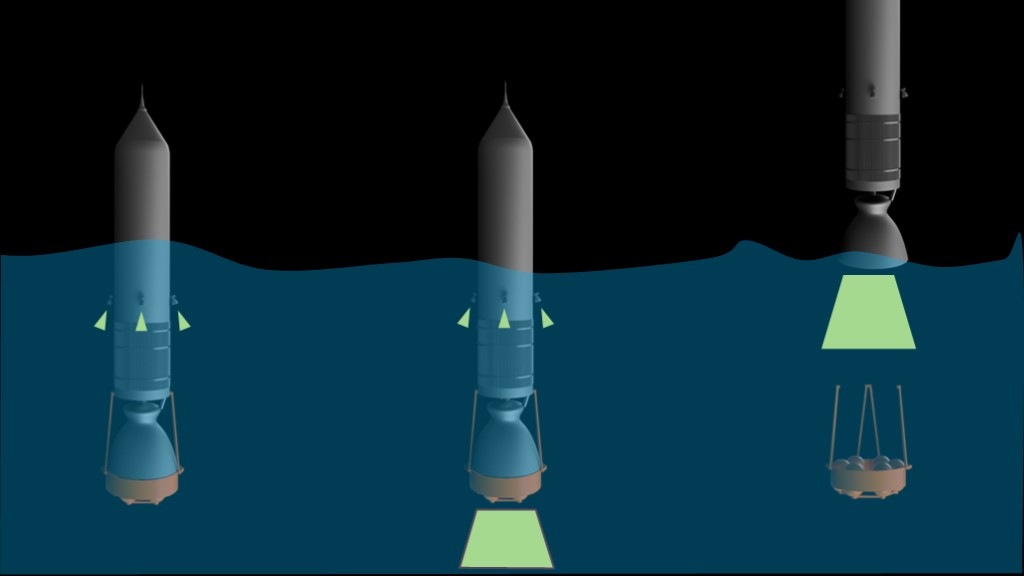
Now it's time to launch...
When the launch checkout is complete, the four auxiliary engines are ignited, and then the large main engine. When performance is verified, the ballast tanks are released and the rocket climbs out of the water and into the atmosphere.
The ballast assembly is recovered for reuse.
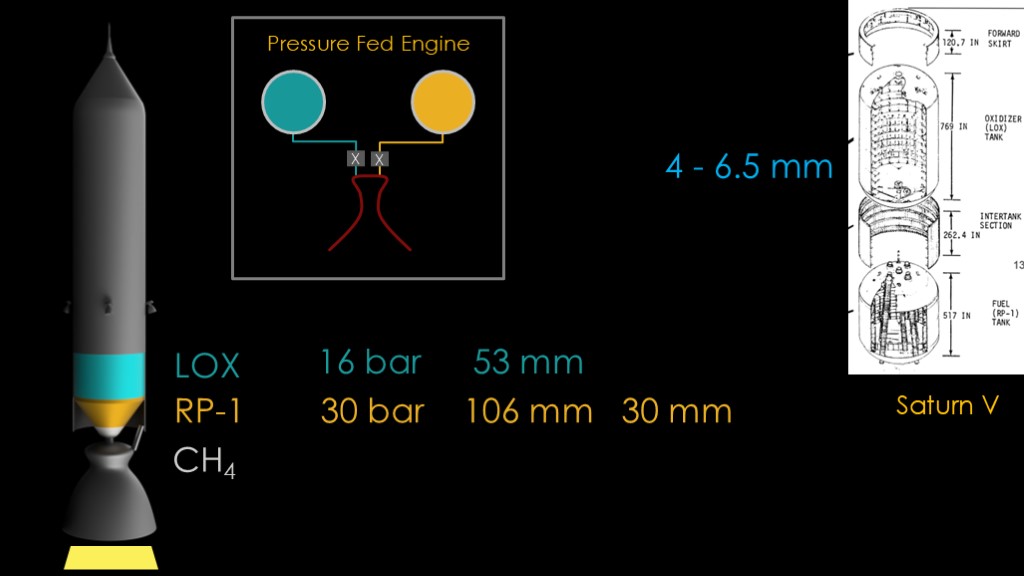
We can now examine the components of this very unique rocket.
The engine is a pressure-fed design - the propellant is stored in tanks under pressure and that pressure feeds the propellant into the combustion chamber. Pressure fed rockets are simple and cheap, but to get decent performance they require high pressure tanks, and those tanks are thick and heavy.
The first stage engine uses the very common mixture of liquid oxygen and RP-1 kerosene, known as "kerolox". The LOX tank is pressurized to 16 times atmospheric pressure, or 16 bar, and uses an aluminum tank 53 mm thick, or 2.1 inches. The RP-1 tank is pressurized to 30 bar, and uses an aluminum tank 106 mm thick, or 4.1 inches. Because of the difficulty of dealing with aluminum sheets of that thickness, they also considered a steel tank for the RP-1, which would only be 30mm or 1.2 inches thick.
These are very thick tanks - the Saturn V first stage tanks were made from aluminum and were 4 to 6.5 millimeters in thickness, though they did have internal reinforcement.
The LOX tank is pressurized by heating the liquid oxygen in the engine and returning the oxygen gas to the tank. This doesn't work for RP-1, so there is an addition tank holding methane gas under high pressure that is used to keep the RP-1 tank pressurized.
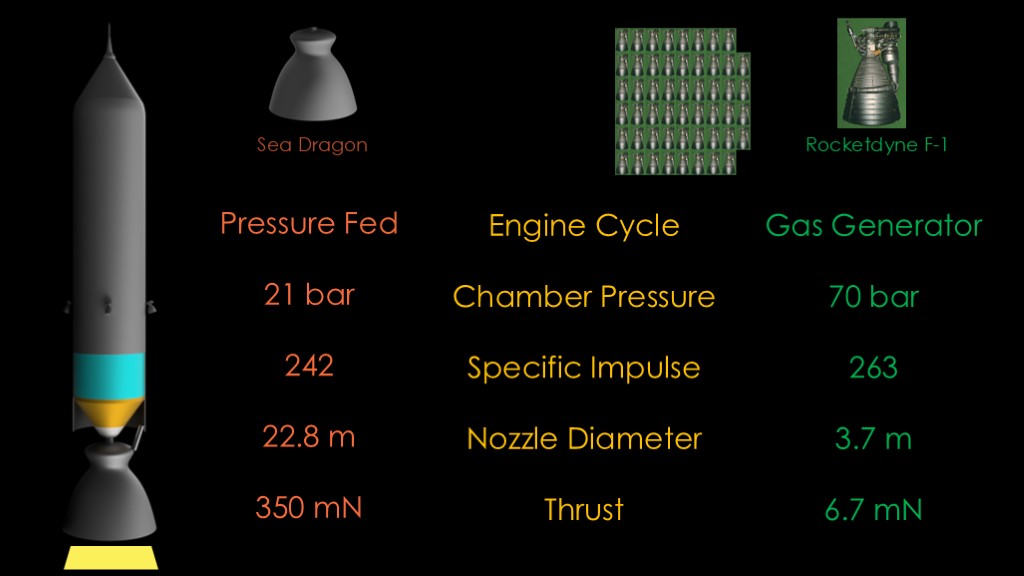
It's time to compare the sea dragon first stage engine to another engine, and the obvious choice is the Rocketdyne F-1 used in the Saturn V first stage.
The engine cycle of the F-1 is gas generator, burning propellants to drive turbopumps. The sea dragon is pressure fed.
The chamber pressure in the F-1 is 70 bar, while Sea Dragon is a much lower 21 bar. This is primarily because of the much lower pressure in the pressure fed design.
The specific impulse - or efficiency - of the F-1 is 263, while the sea dragon is only 242 despite running the same propellant mix.
The F-1 is a very large rocket engine, with a nozzle that is 3.7 meters or about 12 feet across. The Sea Dragon engine is 22.8 meters, or about 75 feet across. Which is huge, and it's smaller in proportion to the F-1 engine - if it was an equally efficient nozzle it would be nearly 50 meters across.
And finally, the F-1 thrust is 6.7 meganewtons, the most powerful single-nozzle engine ever made. The sea dragon is 350 mega newtons. It would take 52 F-1 engines to equal that thrust.
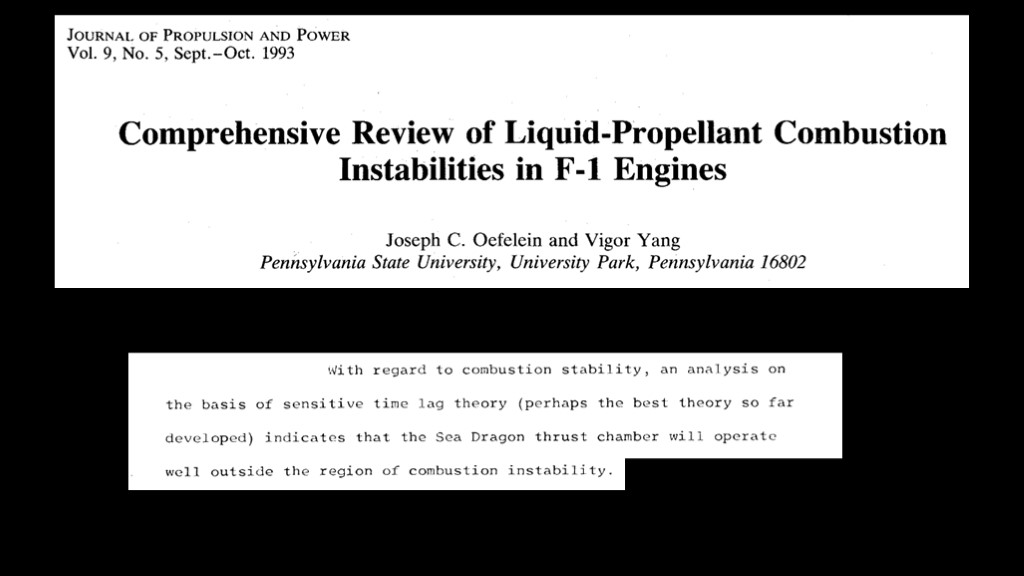
The F-1 engine was, of course, very difficult to develop because the large combustion chamber led to combustion instabilities - variations in thrust that can break engines. Not good.
The Sea Dragon summary has this to say about it.
(read)
Is that correct? I'm not a rocket engine designer, so my opinion shouldn't carry much weight, but I am skeptical.
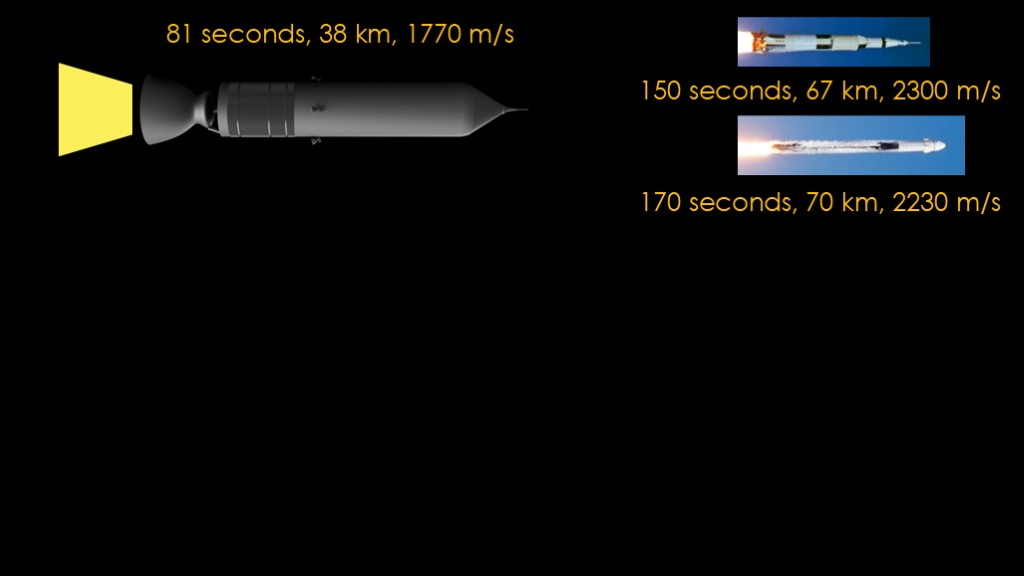
81 seconds after launch, the vehicle reaches 38 kilometers in altitude and a velocity of 1770 meters per second, and the first stage is done. This is a very early staging by rocket standards - the Saturn V and Falcon 9 are early staging rockets, and they are much higher and much faster. Sea Dragon has only about 60% of their kinetic energy at staging...
Can you guess why?
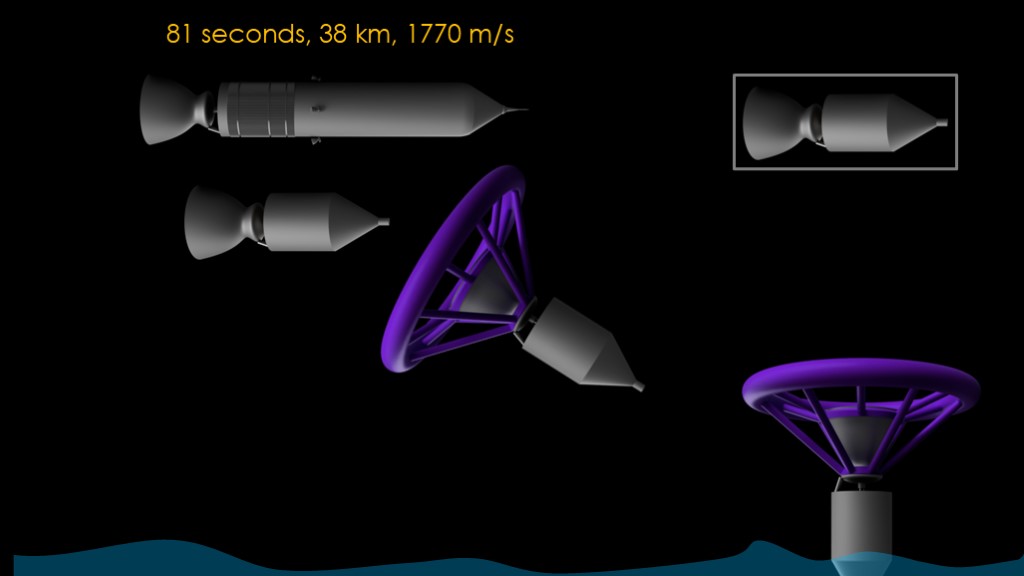
At staging, the first stage detaches from the rest of the vehicle, and then deploys a large drag flute - a ring that is inflated from the methane tank. This ring provides drag to keep the first stage in the proper orientation and slow during reentry, and it will ultimately impact the surface of the sea at 90 meters/second or 300 feet per second. This results in a g-load of only 22 g - it's slow enough and the stage is robust enough due to those very thick tank skins - that there is no damage to the vehicle.
The drag flute is composed of two layers - the inner structural layer and an outer ablative layer that is replaced after each use.
Note that the front of the first stage has a cone shape. This provides an aerodynamic shape for reentry, and the nose tucks inside the nozzle of the second stage engine to reduce vehicle mass and length.
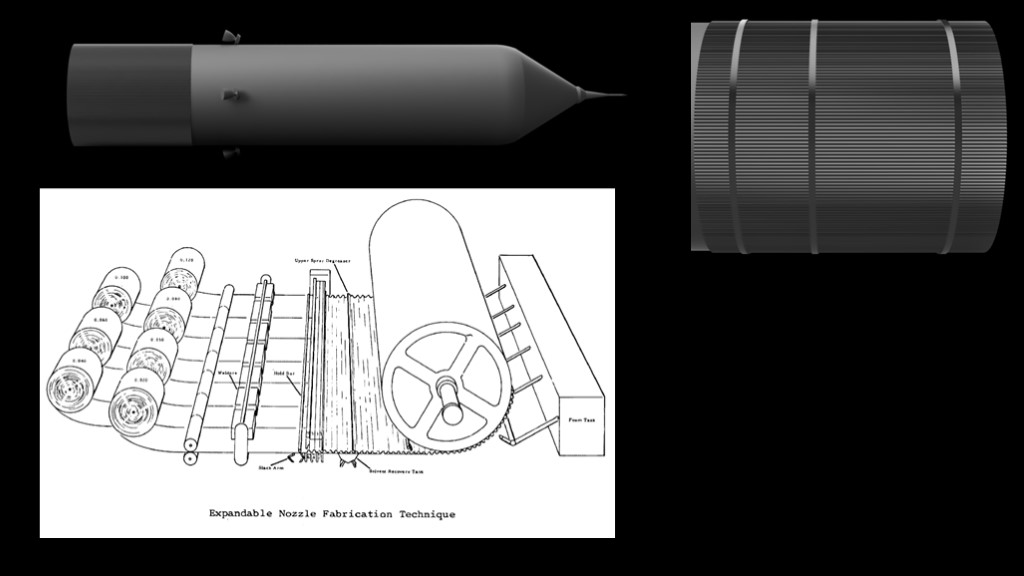
Now we move onto the second stage. You may have noticed a weird texture on the outside of the first stage. That is an expandable nozzle skirt for the second stage engine made out of stainless steel that is approximately 4mm, or 1/6" thick. The thin stainless steel is corrugated to give it strength, and attached to the second stage engine nozzle. During launch, the nozzle is held next to the skin with retention bands.
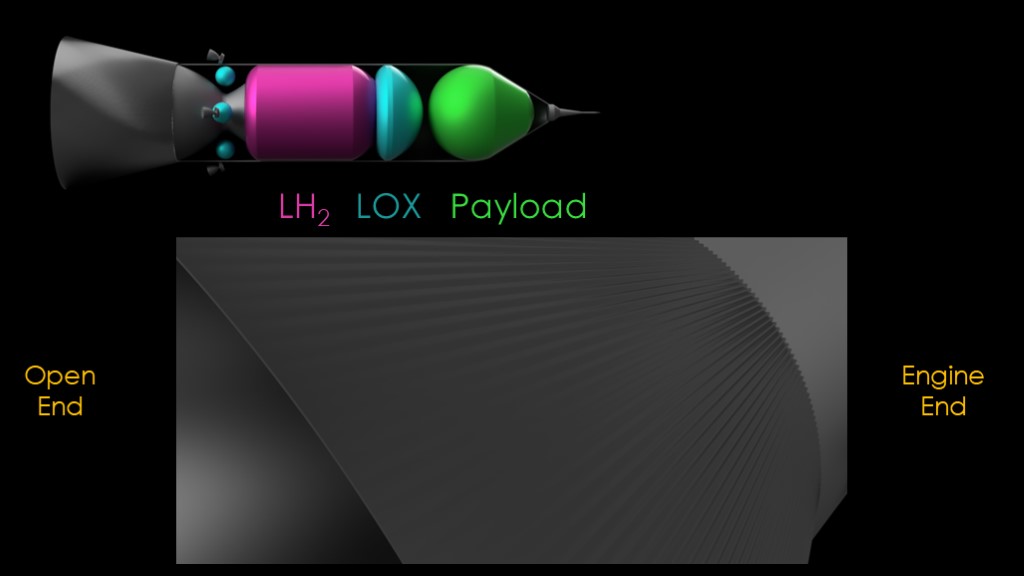
During staging, the bands are removed, and the corrugations allow the end of the nozzle that is not attached to the engine to expand. This larger nozzle significantly increases the efficiency of the engine.
Here's a cutaway of the second stage. The second stage engine burns liquid hydrogen and liquid oxygen, or hydrolox. It has an immense hydrogen tank because liquid hydrogen is not dense. In this variant, there's a payload tank at the front to carry propellant, but it could also be a conventional payload section.
The four auxiliary motors each have their own tiny liquid oxygen tanks - this means that there is no requirement for feed lines from the forward liquid oxygen tank back to those engines.
Like the first stage, it is a pressure fed engine design but both the pressures and stresses are low, so the tanks are made of aluminum that's only 18mm or about 0.7" thick.
There is a second stage recovery plan as well, using a similar drag flute but one that is protected against reentry heat.
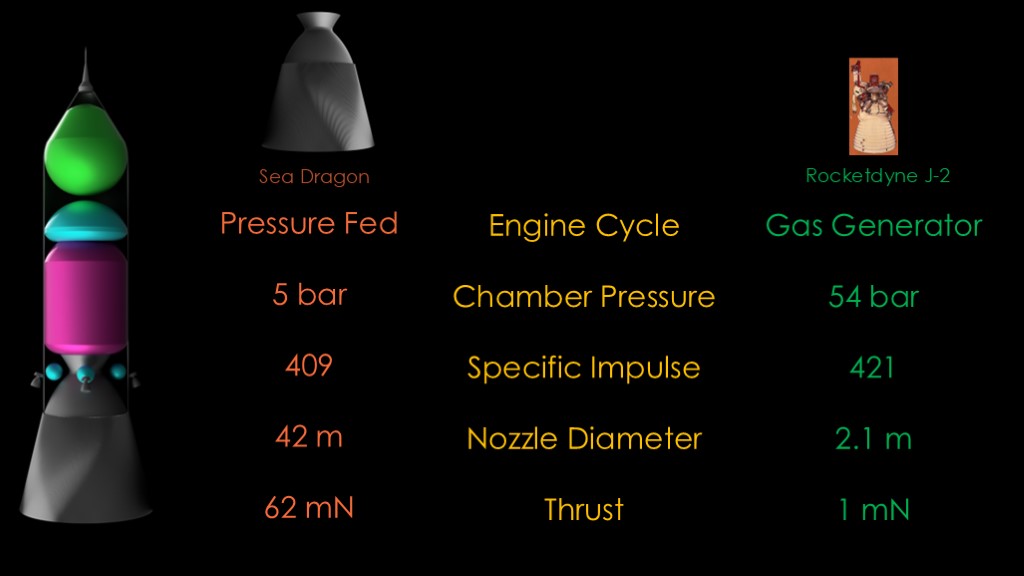
Once again we need an engine to compare to, and the obvious choice is the Rocketdyne J-2 used on the Saturn V second and third stages.
The engine cycle of the J-2 is gas generator, burning propellants to drive turbopumps. The sea dragon is pressure fed.
The chamber pressure in the J-2 is 54 bar, while Sea Dragon is a much lower 5 bar. This is a low pressure design.
The specific impulse - or efficiency - of the J-2 is 421, while the sea dragon is 409. Sea Dragon does well here because of that giant nozzle, a full 42 meters across.
And - finally - the thrust is about 62 times the thrust of the J-2.
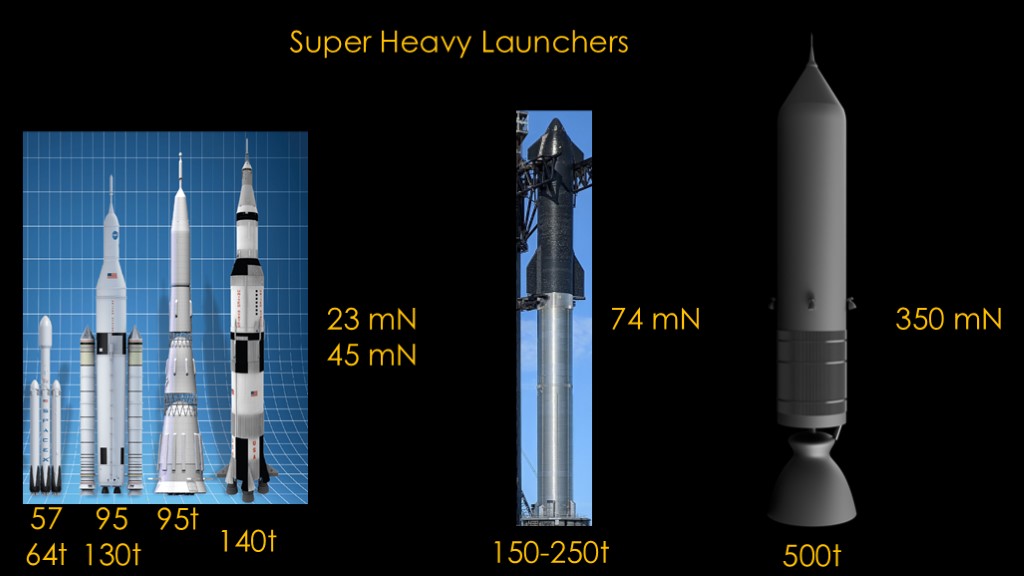
How big was Sea dragon?
These existing super heavy launchers have takeoff thrusts of 23 to 45 mega newtons, and can lift payloads from 57 tons up to 140 tons into low earth orbit.
Starship has a takeoff thrust of 74 mN, and targets a low earth payload of 150 tons in reusable mode up to 250 tons in expendable mode.
Sea dragon is 150 meters tall and has a 23 meter diameter. It has a takeoff thrust of 350 meganewtons. It is a monster that can lift 500 tons to low earth orbit.
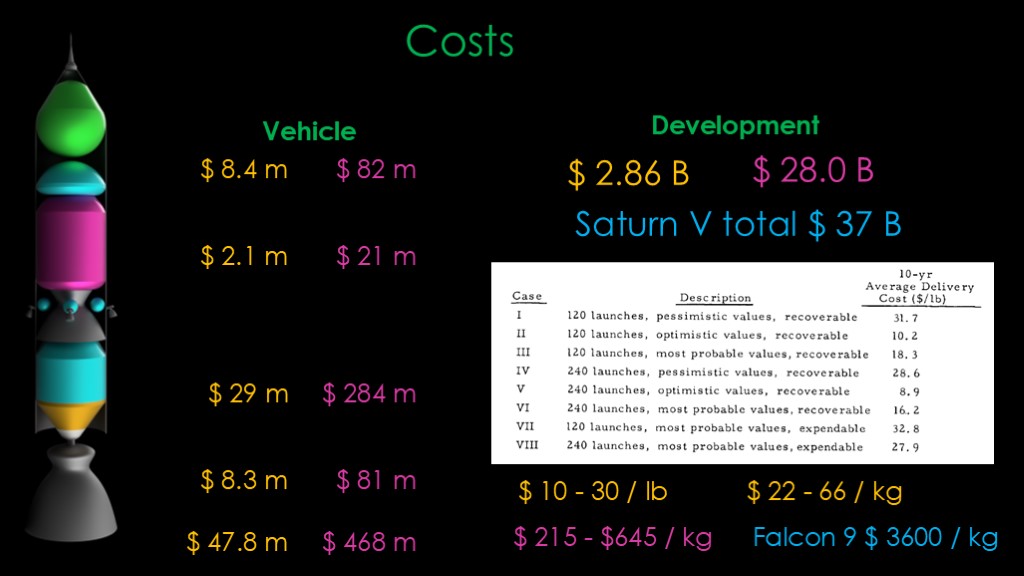
What will all this cost?
The development was estimated at $2.86 billion, or $28 billion in 2023 dollars. The Saturn V cost about $37 B in current dollars for research and development and all the flight hardware.
For the vehicle, the second stage engine is $2.1 million to build and the rest of the stage is $8.4 million.
The first stage is $29 million and the engine is $8.3 million.
That gives a total of $47.8 million. Here are the numbers in current dollars.
There is a complicated model for estimating payload costs to orbit which gives $10-$30 per pound, $22 to $66 per kilogram. That's $215 to $645 per kilogram in 2023 dollars. For comparison, Falcon 9 is about $3600 per kilogram in reusable mode.

Was sea dragon practical?
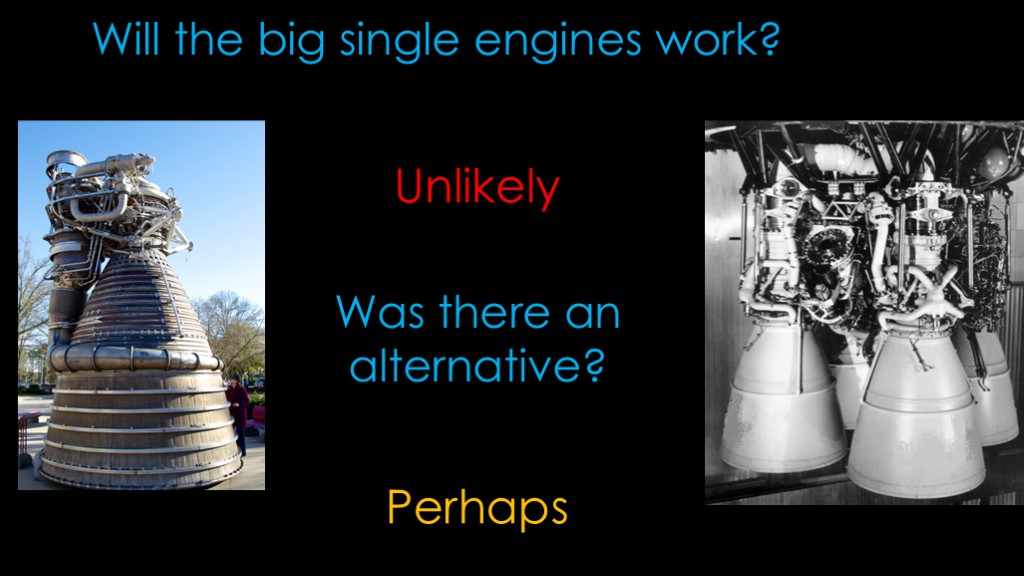
Will the big single engines work?
As I noted earlier, the US had big problems getting the F-1 to be reliable, and the Soviets went to multiple chambers for engines like the RD-170 because they couldn't solve the instability problems. And that was with engines that were a fraction of the size of the sea dragon engines.
I think it's unlikely that they could be made to work.
Was there an alternative?
Perhaps
If you built a lot of pressure-fed small engines, you could probably get them to work. It would change your packaging a lot, and you might get less benefit from the second-stage nozzle - though there's no reason you couldn't use this giant nozzle with a bunch of small engines inside of it.
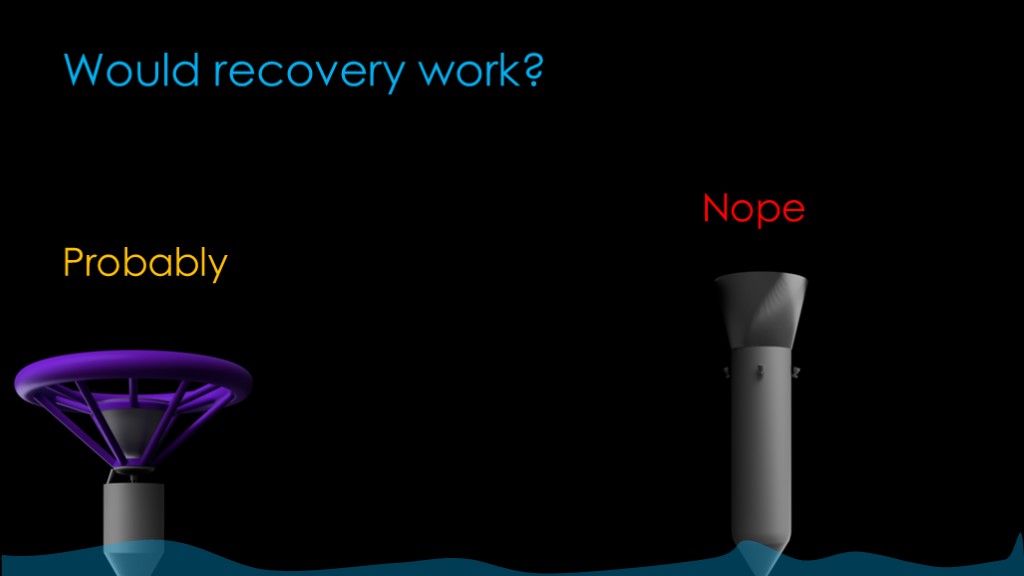
Would recovery work?
For the first stage, probably. It just isn't going very fast so it has much less kinetic energy and more drag than a Falcon 9. And you aren't going to do much to that hugely strong tank section, though you might mess up the engine or engines.
For the second stage, even with the big drag flute that I didn't bother to model, I don't think so. The front of the structure is all aluminum and that is going to get far too melty during the early part of reentry. There's a reason that shuttle had heat shield tiles on top of its aluminum skin.
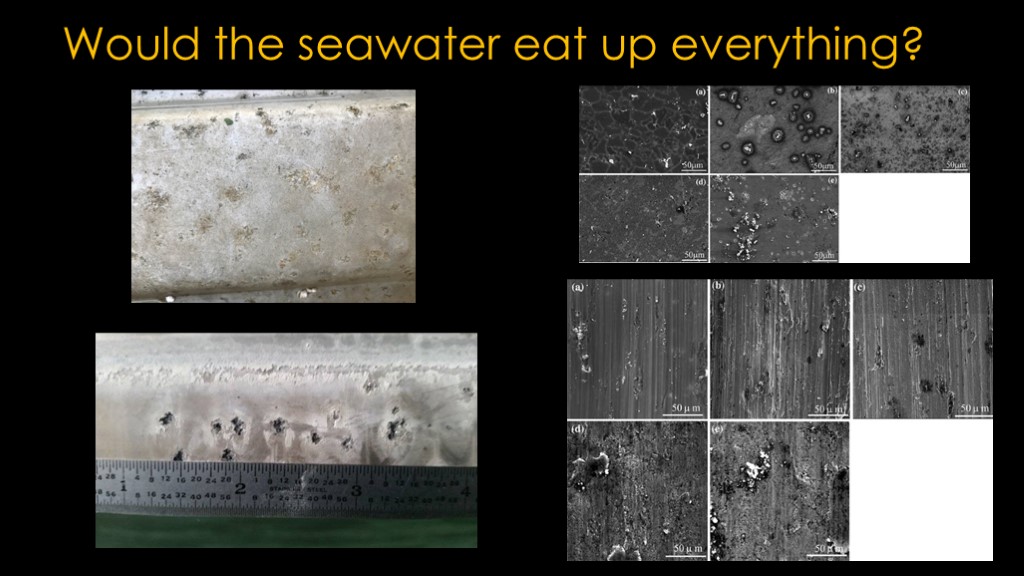
Would the seawater eat up everything?
Seawater and aluminum are not a happy couple. Perhaps it would be possible to coat and seal the aluminum structure, but it would likely be problematic, especially with the engines.

Was sea dragon practical?
Not really. There's a reason NASA built the Saturn V and didn't build the Sea Dragon.
But it's a wild and fun design, and was perfect for a TV series that needed a really big rocket.

If you enjoyed this video, watch "for all mankind". Even though it plays a bit loose with history at times, it's well-written and entertaining.